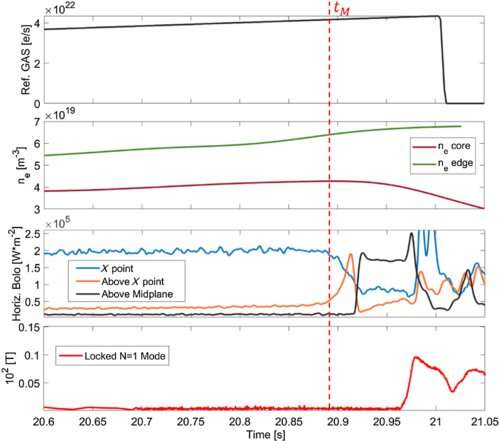
Physicists at EPFL within a large European collaboration have revised one of the fundamental laws that has been the foundation of fusion research for over three decades. The update shows that we can safely use more hydrogen fuel in fusion reactor, and therefore get more energy than we thought.
One of the most promising sources of future energy is fusion. It releases enormous amounts of energy by combining two atomic nuclei. The sun's warmth comes from hydrogen nuclei fusion into heavier helium atoms.
The ITER project aims to replicate the fusion processes of the sun to create energy on the Earth. Its aim is to create high temperature plasma that provides the right environment for fusion to occur and produce energy.
The ionized state of matter is similar to a gas and is almost a million times less dense than the air we breathe. The fusion fuel causes hydrogen atoms to get extremely high temperatures, forcing electrons to separate from their atomic nuclei. The process takes place inside a donut-shaped structure called the tokamak.
Paolo Ricci at the Swiss Plasma Center, one of the world's leading research institutes in fusion located at E, says that in order to create plasma for fusion, you have to consider three things: high temperature, high density of hydrogen fuel, and good confinement.

Ricci's team has released a study updating a fundamental principle of plasma generation and showing that the upcoming ITER tokamak can operate with twice the amount of hydrogen and therefore generate more fusion energy than previously thought.
Ricci says that one of the limitations in making a tokamak is the amount of hydrogen fuel you can inject. In the 1980's, people were trying to come up with a law that could predict the maximum density of hydrogen inside a tokamak.
The answer came in 1988 when fusion scientist Martin Greenwald published a famous law that correlated fuel density to the tokamak's minor radius and current inside the tokamak. The Greenwald limit has been a cornerstone of fusion research ever since, and ITER's tokamak-building strategy is based on it.
The law was derived from experimental data, not a tested theory or first principles. In some cases, like DEMO, this equation means that you cannot increase fuel density above a certain level, which is a big limit to their operation.
The Swiss Plasma Center collaborated with other tokamak teams to design an experiment where they could use highly sophisticated technology to control the amount of fuel injected into a tokamak. The largest tokamak in the world, the Joint European Torus (JET) in the UK, as well as the ASDEX upgrade in Germany, were used for the massive experiments. The EUROfusion Consortium, the European organization that coordinates fusion research in Europe, made possible this large experimental effort.
In order to derive a first-principles law that can correlate fuel density and tokamak size, a PhD student in Ricci's group began to analyze the physics processes that limit the density in tokamaks. Part of that was carried out with a computer model.
Ricci says that the simulations exploit some of the largest computers in the world, such as those made available by the Swiss National Supercomputing Center. Unlike an electrical copper wire, which becomes more resistant when heated, plasmas become more resistant when they cool down. The more fuel you put into it at the same temperature, the more parts of it will cool down, and the more difficult it will be for the current to flow in.
Ricci says turbulence in a fluid is the most important open issue in classical physics.
Ricci and his colleagues were able to crack the code and derive a new equation for fuel limit in a tokamak, which is very compatible with experiments. It was published in Physical Review Letters and it does justice to the limit.
The new equation shows that tokamaks like ITER can use almost twice the amount of fuel as before, without the worry of disruptions. That is very good news.
More information: M. Giacomin et al, First-Principles Density Limit Scaling in Tokamaks Based on Edge Turbulent Transport and Implications for ITER, Physical Review Letters (2022). DOI: 10.1103/PhysRevLett.128.185003 Journal information: Physical Review Letters Citation: A new law unchains fusion energy (2022, May 17) retrieved 17 May 2022 from https://phys.org/news/2022-05-law-unchains-fusion-energy.html This document is subject to copyright. Apart from any fair dealing for the purpose of private study or research, no part may be reproduced without the written permission. The content is provided for information purposes only.